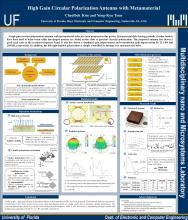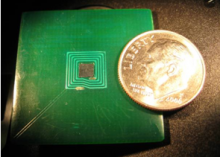Ultra-compact Magnetoelectric Nanowire Antennas
We are developing ultra-compact antennas, where the antenna size is much smaller than the electromagnetic wavelength.
Pervasive wireless connectivity is a must for today’s interconnected world. Many MHz-GHz communication systems require antennas with physical sizes that can be much larger than the entire size of the system. It is difficult to achieve good antenna performance if the size of the antenna is less than 1/10ththe electromagnetic wavelength (e.g. minimum of 3 cm at 1 GHz)







.png)